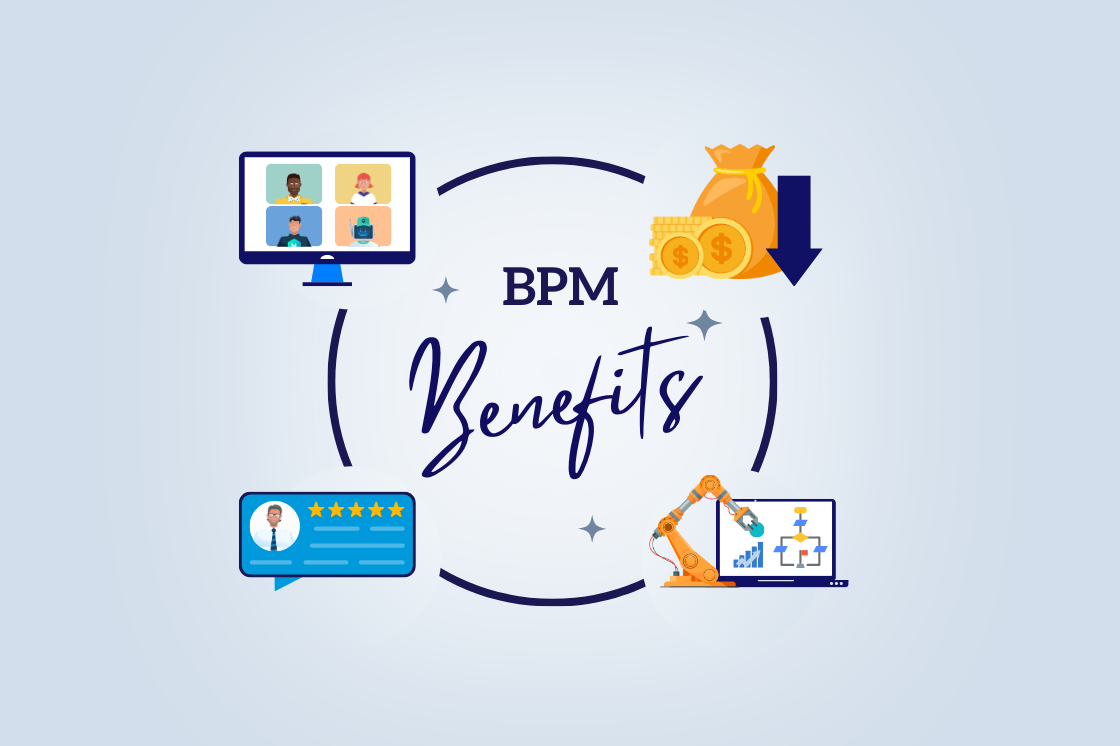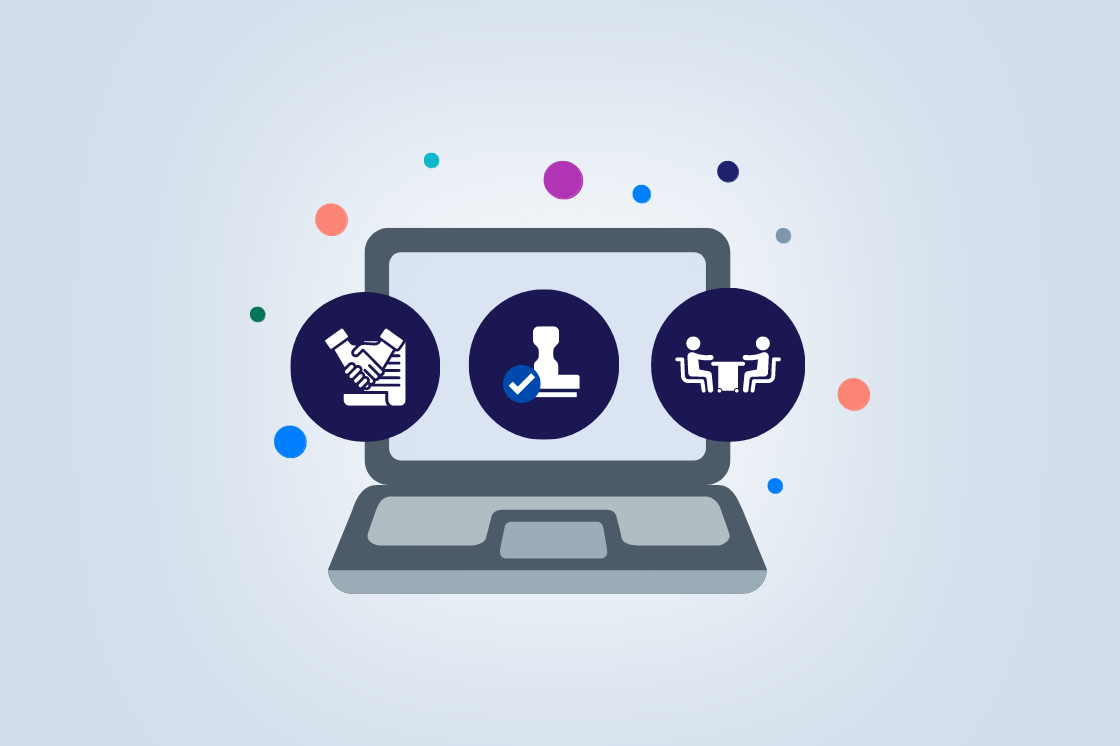Business Process Management Methodologies, What's In Your Toolbox?
The landscape of tools and techniques for business process management (BPM) can be confusing. Many different frameworks, techniques, and methods make up this discipline, so it can be tough to know what to place in your BPM toolbox.
It is clear why new entrants to BPM suffer from this confusion. Look at the many methods at your disposal:
Process Modeling Techniques
There are various business process modeling techniques that enable you to create process diagrams and artifacts to design and document a process.
- BPMN, Business Process Modeling Notation, helps organizations design and communicate their processes in a standard graphical format.
- UML, Unified Modeling Language, is primarily used in software engineering to visualize the design of a system.
- FlowCharting is the creation of a process or workflow using standard shapes connected by arrows.
- DataFlow Diagrams show the flow of data through a process or a system. It isn't a diagram of the process.
Process Frameworks
Process Frameworks provide an excellent starting point for building your processes. Based on industry best practices, these frameworks will save you time.
- ITIL is the deFacto standard for ITSM processes and practices. Initially created in 1989, it has evolved into 34 processes/practices spread across three categories (general management, service management, and technical management).
- COBIT is one of the most popular frameworks for IT management and governance. Released in 1996 as a set of IT Controls, COBIT has gone through many evolutions, the most current being COBIT 2019.
- APQC Process Classification Framework (PCF) is a list of universal business processes performed by every business, giving you a common language to communicate and define work processes across your organization
- ISO/IEC 20000 is an ITSM standard from the International Organization for Standardization, often used to assess Service Providers.
- MOF is the Microsoft Operations Framework. Initially seen as an alternative to ITIL, it no longer appears to be updated by Microsoft.
- eTOM is a service management framework initially focused on the telecommunications industry. Now known as the Business Process Framework, its touted as a framework for service-focused businesses.
- USMBOK, the Universal Serice Management Body of Knowledge, provides essential reference materials for the ITSM practitioner.
- USM, the Unified Service Management method, is a universal approach for service management.
Business Process Improvement
Processes left to their own devices will degrade over time. These business process improvement techniques, combined with periodic process assessments, will help keep your processes on track.
- Six Sigma is the use of statistics to analyze processes and reduce errors.
- TQM, Total Quality Management, is an employee-centric approach to process improvement and customer satisfaction.
- Lean IT, based on lean manufacturing principles, is an approach to eliminating waste in IT processes.
- Kaizen, a Japanese word for improvement, is an approach that involves all employees in improving business functions.
- PDCA, the Plan Do Check and Act cycle, is an iterative approach to continuous process improvement.
- CMMI, Capability Maturity Model Interactive, is a set of best practices enabling an organization to improve business practices.
System Development
Business Process Automation (BPA) is a common way of implementing processes. These development methodologies provide the necessary guidance.
- Agile is a highly collaborative and iterative development approach designed to deliver better software faster.
- DevOps brings together the development teams and the operations teams with the goal of shortening development time and providing the continuous delivery of high-quality software.
- RAD, rapid application development, is an interactive approach to software development relying heavily on prototypes. It is also a more general term for iterative software development.
- Waterfall Model is a sequential approach to software development that includes the following phases; conception, initiation, analysis, design, construction, testing, deployment, and maintenance.
Project Management
Designing and implementing a process requires cross-functional participation. These project management methods can keep the initiative on time and within budget.
- Prince2, PRojects IN Controlled Environments, is a scalable process-based approach to project management.
- PMI PMBOK is the Project Management Body of Knowledge, a well-recognized project management method.
Organizational Change Management
Implementing new processes into an organization can result in resistance and pushback from the stakeholders. These organizational change management methods can build support and help solidify the change.
- ADKAR is a model for implementing organizational change focused on the five outcomes of; Awareness, Desire, Knowledge, Ability, and Reinforcement.
- Dr. Kotter's 8-step process for implementing an organizational change. Derived from decades of observations and research by the Konosuke Matsushita Professor of Leadership, Emeritus, at the Harvard Business School.
Process Modeling Tools
There is a large market selection of process modeling tools and process documentation software. These tools can simplify many of the modeling tasks. These tools can be as simple as the Microsoft Office suite to more sophisticated business process analysis and automation tools. The Navvia Process Designer is one such tool.
Check out our Guide to Selecting Business Process Mapping Tools.
Your Business Process Management Toolbox
So, which of these methodologies and techniques should I add to my Business Process Management toolbox? There is no correct answer. What I do know is that aspects of each of these methods can all prove valuable. It is an extensive pallet of colors; you can blend them to create something unique.
For example, you can use simple flowcharting to document your processes. You can use a combination of the APQC framework for business processes and ITIL for Information Technology processes. You may also use different improvement techniques depending if you are a manufacturing company or a service provider.
The important thing is to become familiar with the various techniques and select those that make sense for your company. Once you create your toolbox, you should use the same tools for all process initiatives. That way, everybody is on the same page, and you're not adding to the confusion.
Test out your tools on a current initiative – using a simple process change to try out techniques and frameworks will give you a good idea of whether you are on the right track. Spending too much time in theoretical discussions at this point may be counterproductive – try it out and see if it works for you.
Be selective and look at what brings you business value. If you are utilizing a framework or template that instructs you to do things in a certain way and it just doesn't work for your organization, then change or remove it. Rigid adherence to frameworks is not practical – every organization is different.
Remember not to overcomplicate your BPM. It is, after all, simply a managing technique. Please focus on the business value it provides rather than its theory. As with all frameworks and practices, adopt and adapt them to your way of working.
When starting in BPM, use simple tools – there is nothing wrong with paper and sticky notes as a starting point. As your maturity and understanding increase, so will the complexity of the tools and methods you use.
Originally published Jan 24, 2017 11:51, updated Jul 19, 2022


